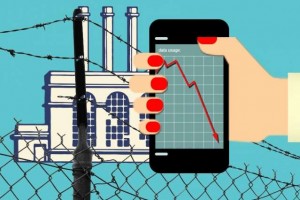If you leave your job, chances are your pattern of cellphone use will also change. Without a commute or workspace, it stands to reason, most people will make a higher portion of their calls from home—and they might make fewer calls, too.
Now a study co-authored by MIT researchers shows that mobile phone data can provide rapid insight into employment levels, precisely because people’s communications patterns change when they are not working.
Indeed, using a plant closing in Europe as the basis for their study, the researchers found that in the months following layoffs, the total number of calls made by laid-off individuals dropped by 51 percent compared with working residents, and by 41 percent compared with all phone users. The number of calls made by a newly unemployed worker to someone in the town where they had worked fell by 5 percentage points, and even the number of individual cellphone towers needed to transmit the calls of unemployed workers dropped by around 20 percent.
“Individuals who we believe to have been laid off display fewer phone calls incoming, contact fewer people each month, and the people they are contacting are different,” says Jameson Toole, a PhD candidate in MIT’s Engineering Systems Division, and a co-author of the new paper. “People’s social behavior diminishes, and that might be one of the ways layoffs have these negative consequences. It hurts the networks that might help people find the next job.”
When the factory closes
The paper, just published in the Journal of the Royal Society Interface, builds a model of cellphone usage that lets the researchers correlate cellphone usage patterns with aggregate changes in employment. The researchers believe the phone data closely aligns with standard unemployment measures, and may allow analysts to make unemployment projections two to eight weeks faster than those made using traditional methods.
“Using mobile phone data to project economic change would allow almost real-time tracking of the economy, and at very fine spatial granularities … both of which are impossible given current methods of collecting economic statistics,” says David Lazer, a professor at Northeastern University and a co-author of the paper.
In addition to Toole and Lazer, the co-authors of the paper are Marta Gonzalez, an associate professor of civil and environmental engineering at MIT; Yu-Ru Lin of the University of Pittsburgh; Erich Muehlegger of the University of California at Davis; and Daniel Shoag of the Harvard Kennedy School.
References:http://phys.org/

